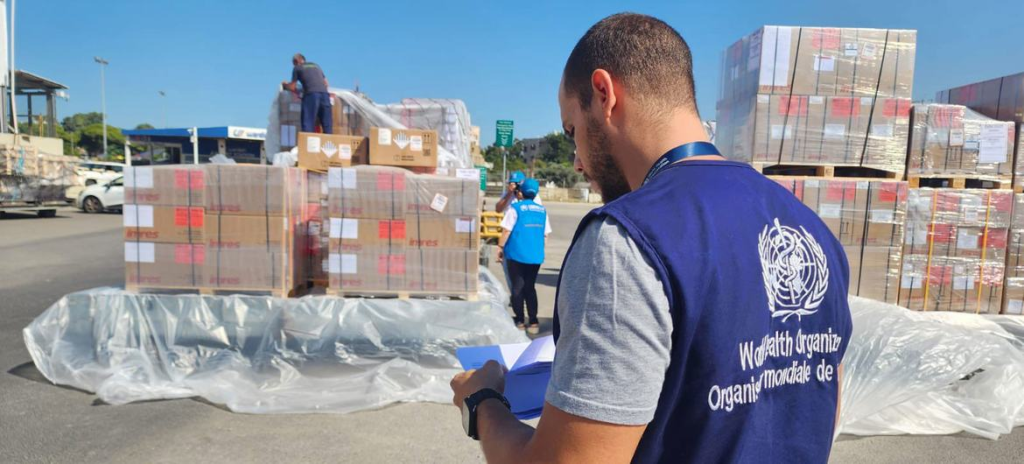
UN NEWS
As Lebanon suffered another night of heavy Israeli bombing, UN humanitarians and partners described how people desperate to flee the violence found the country’s main border crossing into Syria cut by a new dawn strike, forcing them to skirt “a huge crater” and rubble on foot, to reach the other side.
Citing the Lebanese authorities, Mr. Luciano added that over the same period, 50,000 mainly Lebanese and 10,000 Syrians had flown out of Beirut airport and around 1,000 had fled by sea.
Around one million people are estimated to have been displaced in Lebanon since last October, amid intensifying exchanges of fire either side of the UN-patrolled Blue Line the separates Lebanon and Israel, following the outbreak of war in Gaza.
IOM data indicates that as of 2 October, 400,000 were displaced in the last two weeks alone, amid ongoing Israeli military operations in Lebanon, including ground incursions in the south.
Migrant worker plight
“Of these, more than 165,000 are living in 800 collective shelters across the country. These are schools, that the Government has urgently opened,” said IOM’s Mr. Luciano. “Of course, the numbers continue to rise, as heavy shelling continues to the south in the Beqaa [Valley], in Beirut and other regions.”
Humanitarians said that there was particular concern for the plight of Lebanon’s 180,000 migrant workers – many of whom are female domestic staff – who have been left destitute by the mass displacement.
“There were two strikes and a huge crater was created in the no-man’s land between the Syrian and the Lebanese side. It’s very hard for vehicles still to go through this road,” said Rula Amin, Senior Communications Advisor for the UN refugee agency, UNHCR, for the Middle East and North Africa.
Speaking from Amman, Ms. Amin said that people at the Masnaa crossing were so “desperate to flee Lebanon that they walked actually through that destroyed road”.
Hundreds of thousands of people have crossed into Syria via this route in the past 10 days, according to the UN International Organization for Migration (IOM).
Escape routes
“The conflict is intensifying,” said Mathieu Luciano, IOM Head of Office in Lebanon. Speaking from Beirut, he said that between 21 September and 3 October, approximately 235,000 people had crossed into Syria overland, including 82,000 Lebanese and 152,000 Syrians.
Citing the Lebanese authorities, Mr. Luciano added that over the same period, 50,000 mainly Lebanese and 10,000 Syrians had flown out of Beirut airport and around 1,000 had fled by sea.
Around one million people are estimated to have been displaced in Lebanon since last October, amid intensifying exchanges of fire either side of the UN-patrolled Blue Line the separates Lebanon and Israel, following the outbreak of war in Gaza.
IOM data indicates that as of 2 October, 400,000 were displaced in the last two weeks alone, amid ongoing Israeli military operations in Lebanon, including ground incursions in the south.
Migrant worker plight
“Of these, more than 165,000 are living in 800 collective shelters across the country. These are schools, that the Government has urgently opened,” said IOM’s Mr. Luciano. “Of course, the numbers continue to rise, as heavy shelling continues to the south in the Beqaa [Valley], in Beirut and other regions.”
Humanitarians said that there was particular concern for the plight of Lebanon’s 180,000 migrant workers – many of whom are female domestic staff – who have been left destitute by the mass displacement.
